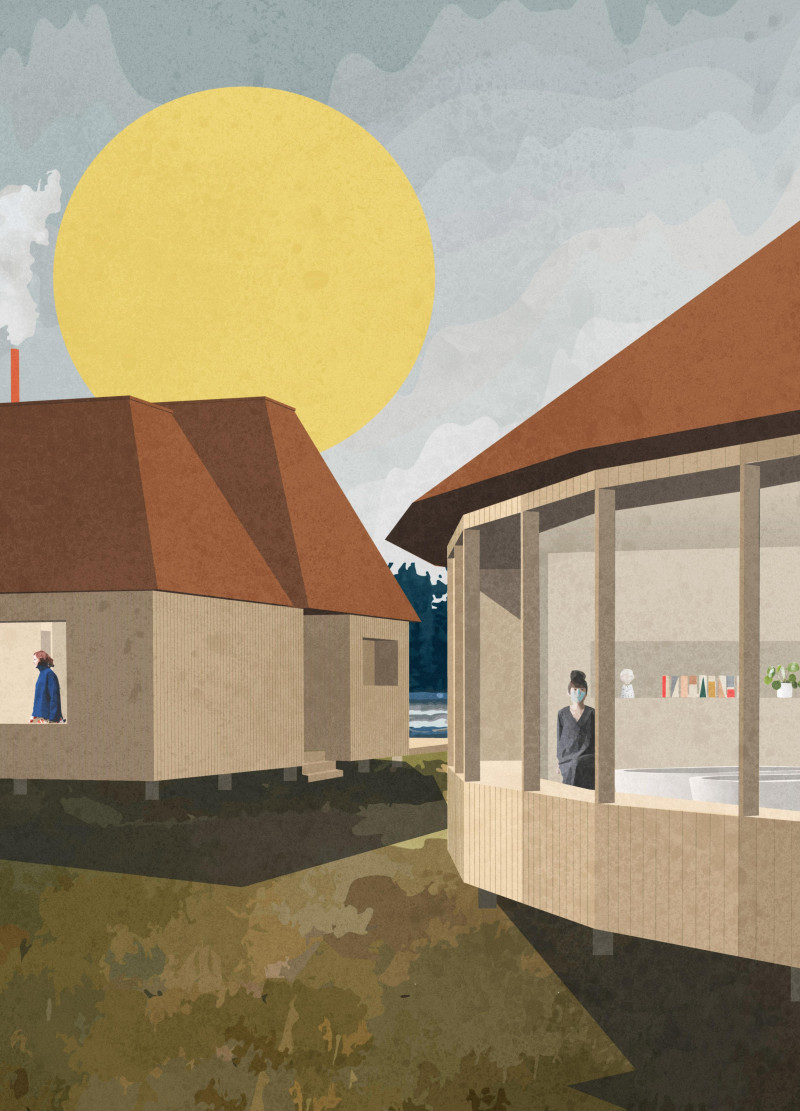5 key facts about this project
Blue Clays is an architectural retreat designed to help people reconnect with nature, relationships, and themselves. Situated in a calm setting, the project addresses the disconnection that many experience in daily life. It provides a dedicated space for healing the body and mind, focusing on the importance of engaging with the natural environment. The design concept balances communal spaces with areas for personal reflection, inviting guests to immerse themselves in their surroundings.
Conceptual Framework
The core idea is to create spaces that foster both social interaction and individual contemplation. The layout is carefully organized to promote mindfulness, offering a range of environments that cater to different experiences. This thoughtful arrangement allows guests to find both energetic engagement and peaceful solitude in proximity to nature.
Spatial Organization
The design incorporates volumes inspired by traditional architectural forms, merging cultural influences with contemporary needs. Attention to site orientation and spatial arrangement enhances the connection between occupants and the landscape. Views are framed to highlight the surrounding beauty, encouraging guests to pause and reflect, deepening their bond with the environment.
Material and Community Engagement
Natural materials are central to the construction of Blue Clays, reinforcing the theme of environmental awareness. The focus on using locally sourced materials encourages collaboration with local craftsmen and involves the community in the building process. This not only supports the local economy but also strengthens the connection to the setting, creating a sense of ownership among those who participate.
Sustainability and Impact
The design considers the longevity of materials, ensuring that components can be reused or biodegraded after their lifecycle. Elevating structures off the ground helps reduce impact on the site, preserving the natural landscape. These design details reflect a commitment to sustainability and allow the architecture to exist in harmony with the environment, enhancing the experience for all who visit through its unobtrusive presence.


























